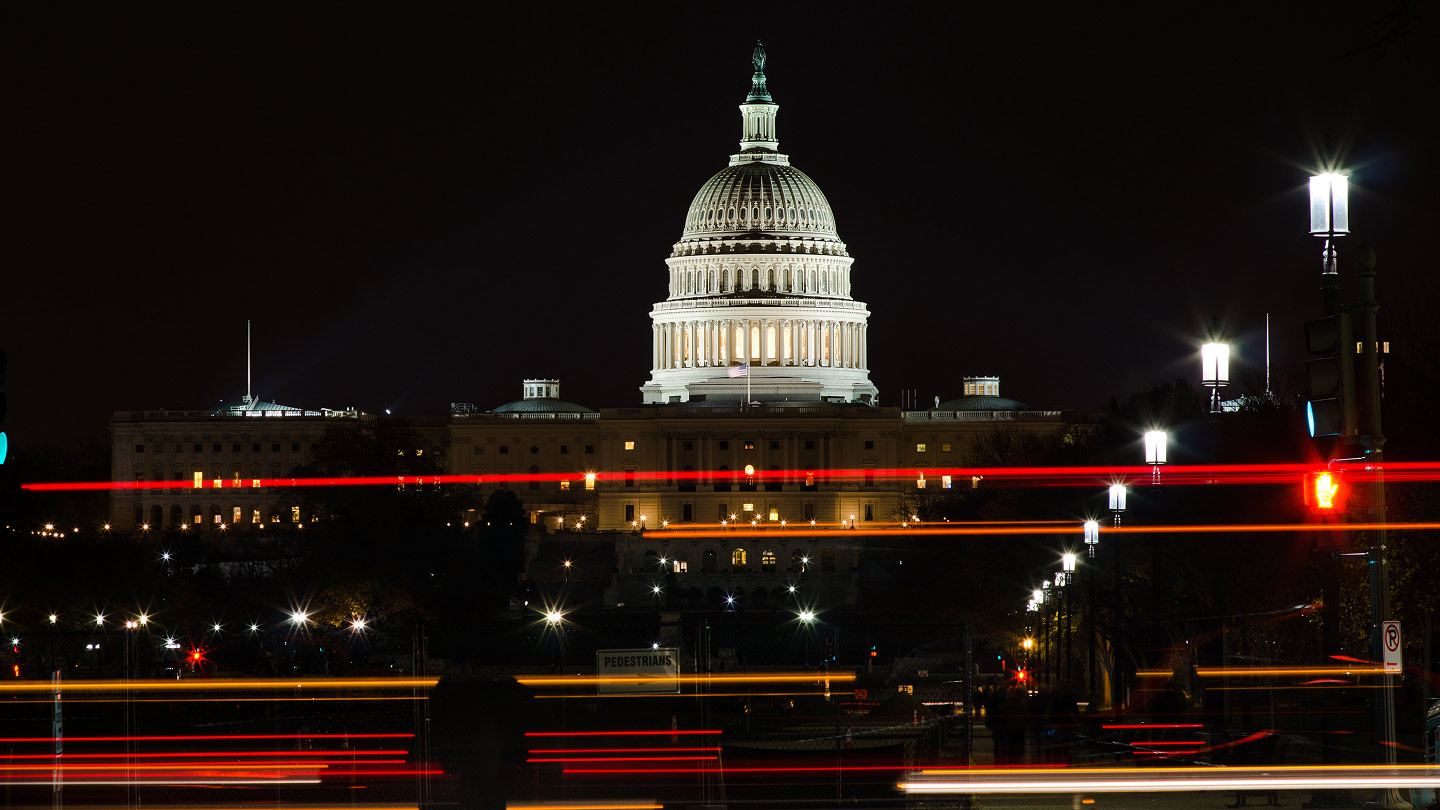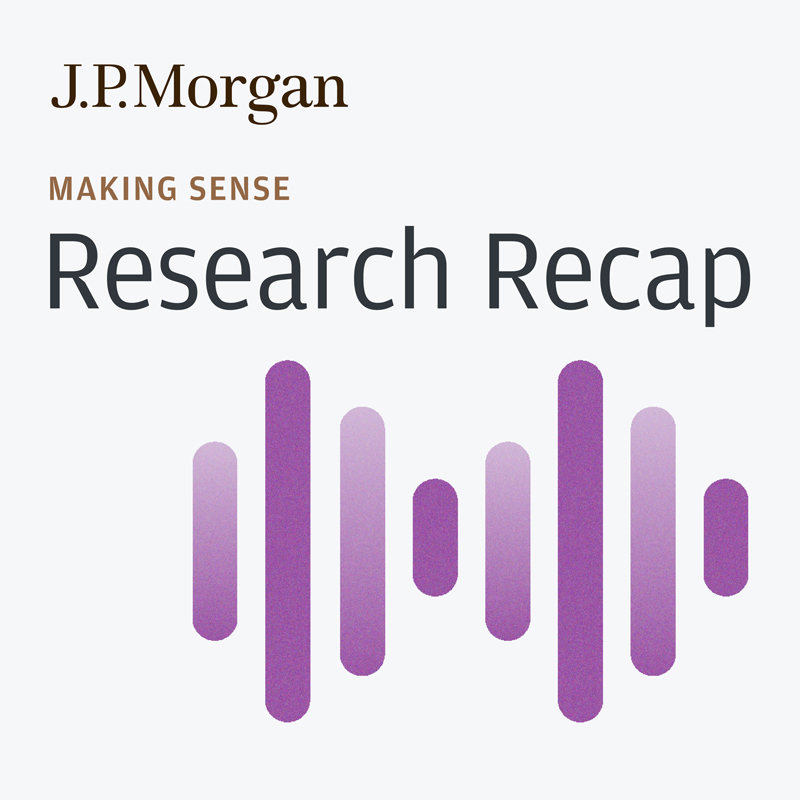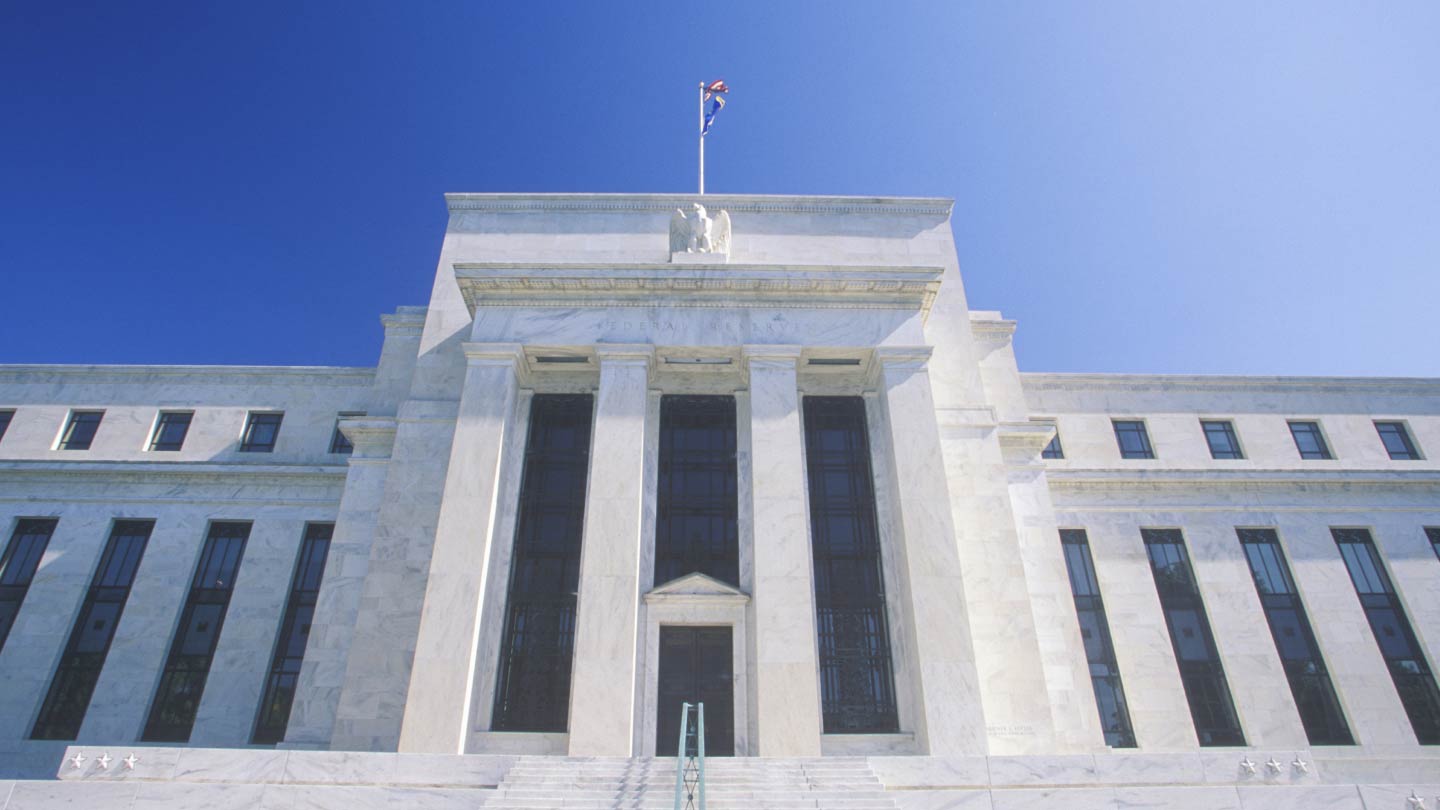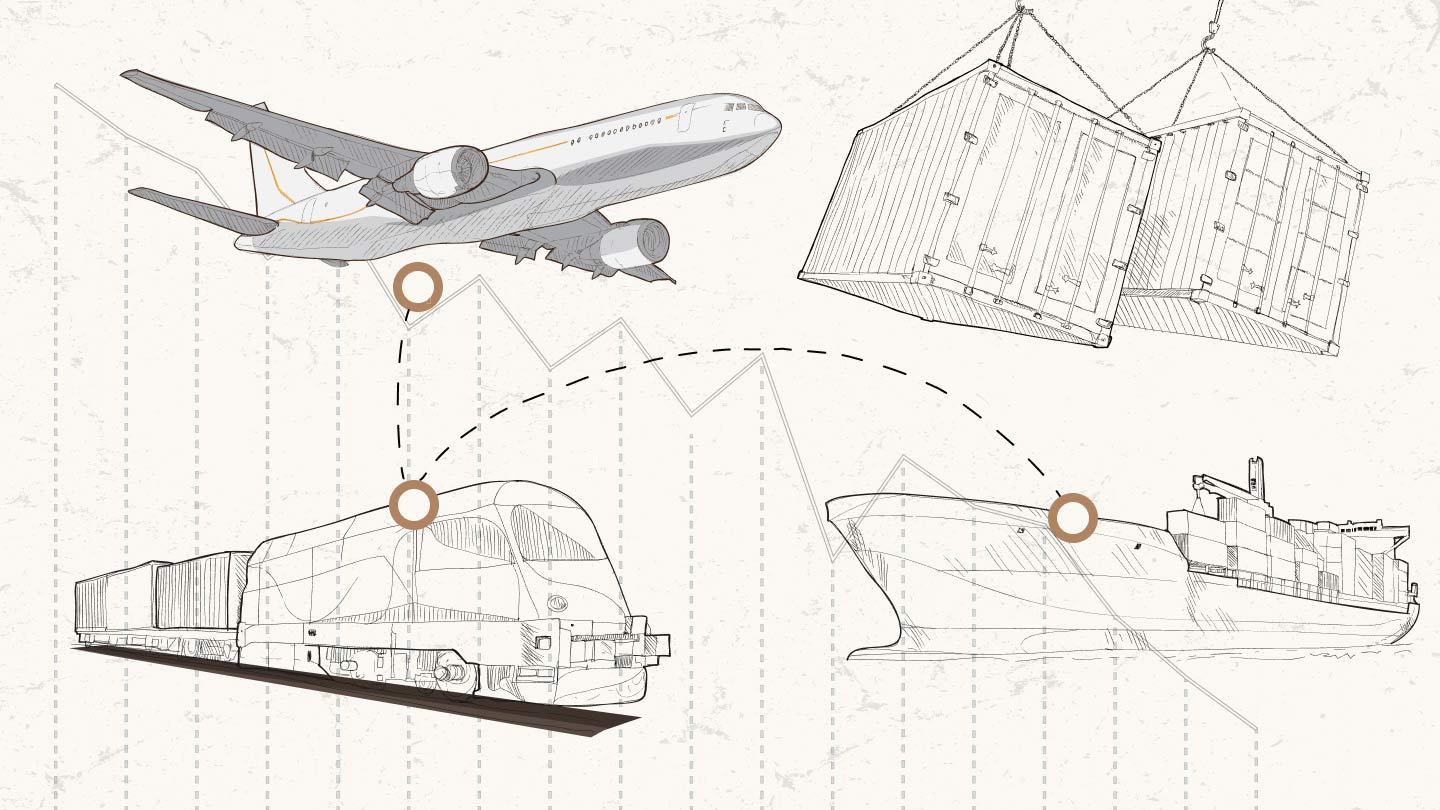Uncharted territory: Unpacking the longest government shutdown on record
[Music]
Sam Azzarello: Welcome to J.P. Morgan’s Making Sense. I’m Sam Azzarello, and today we’re diving into the ongoing U.S. government shutdown. With negotiations in full swing, the economic and market impacts are evolving, and uncertainty continues to build for clients, investors, and everyday Americans. To help us unpack the latest developments, I’m joined by two of J.P. Morgan’s leading experts. First, we have Michael Feroli, our chief U.S. economist, who will walk us through the shutdown’s effects on economic growth, consumer sentiment, and the sectors most at risk. We’ll also hear from Jay Barry, our global head of Rate Strategy. Jay will break down how financial markets have responded to the prolonged shutdown, what’s happening in Treasury yields and liquidity, and how expectations for Fed policy and Treasury issuance are shifting as the situation drags on. Mike and Jay, thank you so much for joining me on today’s podcast. Mike, let's start with you. What are the latest estimates of the shutdown's impact on GDP and economic activity? Has the effect grown as the shutdown has dragged on?
Mike Feroli: Yes, the latest estimate. Actually, CBO just put out a recent update which suggests about a quarter percentage point per week on GDP growth in the fourth quarter. So that would imply right now you'd be running a little bit over a percentage point taken off of GDP growth in the first quarter. Now that effect grows at least linearly with time and maybe, increases even beyond that as we get into uncharted territory now with the longest shutdown on record, raising questions about activity growth that you're not going to see. recovered in the first quarter of next year. So, for example, while back pay will come back, flights that have been canceled won't necessarily be added back to, schedules later on. So I do think there is a growing risk that we're seeing, something beyond just a temporary loss, in activity growth.
Sam Azzarello: Let's talk about sentiment. Are there any signs of lasting damage to consumer or business sentiment? And I guess I'd add, have we seen changes in spending, hiring, or investment?
Mike Feroli: So sentiment on the business side doesn't seem to be majorly impacted by, the shutdown so far. You know, business sentiment does remain softish, but it's hard to disentangle that from just the business cycle, what's going on with trade policy, et cetera. Consumer sentiment has looked a little weak, and perhaps some of that is due to the shutdown. There have been some reports showing up in those, sentiment measures. in terms of actual spending, it's hard to say for sure because most of the spending data we have has been shut down, with the statistical agencies being shuttered. What we have seen broadly suggests, you know, I think that in the labor market, things remain soft but have not broken out significantly to the downside. That's our best guess right now.
Sam Azzarello: How is the lack of government data then, affecting economic forecasting and decision making? Are private data sources and alternative data filling the gap, or is uncertainty increasing?
Mike Feroli: Certainly uncertainty is increasing. and this is making forecasting much more difficult. private data sources and the Federal Reserve and state jobless claims have, partly filled in the gap, but we think they are, you know, in the best of times, I think they are complements and not substitutes to the federal data. A lot of the private data is benchmarked to the federal data. So, it gives us a very impressionistic view of how the economy is evolving here, but definitely not a precise one. In terms of decision making by policy making decisions, that's actually an interesting debate right now. Several Fed policymakers have said the lack of data is basically a reason to go more cautiously, presumably meaning not going ahead and cutting at the next meeting. Others, however, have seen the shutdown as another downside risk to growth, which may motivate a cut. But right now, Chair Powell seems to be in the former camp of if we don't have data, let's not act in one way or another.
Sam Azzarello: Are there any specific sectors or industries that you would flag in terms of being particularly impacted by the shutdown?
Mike Feroli: You know, the industries that we have most, clarity into are those that are publicly traded. Right? And most of the publicly traded companies that we talk to are not being impacted because they have ample access to liquidity. So you know, if you talk to our defense analysts, they say no problems, they're just going to go ahead and continue to do what they do, because they have ample liquidity and they're pretty sure they're going to get paid later on. Where there may be problems is, you know, in smaller contractors. But smaller contractors, we just don't have the visibility into really small businesses to know how big the hit is there.
Sam Azzarello: So I'm now going to ask you to put on your political strategist cap. What are the possible scenarios for ending the shutdown? What should clients and our partners be watching?
Mike Feroli: We are not seeing a whole lot of motion recently. For what it's worth, prediction markets are suggesting that this should end sometime in the next two weeks. And we would assume that any solution involves, the Republicans at least partially coming toward the Democrats on, the Obamacare premium support, which is, the sticking point right now.
Sam Azzarello: Jay, let's turn to you and talk about financial markets. How have markets responded to the prolonged shutdown? Any notable moves you would flag in treasury yield, risk assets or volatility?
Jay Barry: Yeah, so interestingly, Sam, since the onset of the shutdown, we've seen treasury yields decline. And that's been pretty typical because in each of the larger and longer prior shutdowns, we have seen yields decline in the weeks lead leading up to, and then follow through in the weeks leading after the onset of the shutdown, the moves this time around have been more muted than they've been in the past, I think in part because, as we expected, this is just a government shutdown and there is no debt ceiling debate being attached to it as there have been in some previous episodes. But beyond that, what Mike just spoke about, which is the sort of more neutral position of Chair Powell at the FOMC meeting last week, pushing back on December pricing, I think, as markets have priced in reduced probability of a cut in December, that's also taken back some of the decline in yields that we saw in the beginning of the shutdown. So it's been a pretty modest move, all considered. And despite the fact that uncertainty over the economy is somewhat higher now, as Mike spoke about, implied vols in the U.S. Rates market are actually lower by more than a basis point per day. But that's actually not surprising, again, because it's been consistent with what we've seen in other shutdowns. And in large part it's because there's this absence of data. And I think there's been a piece that Bruce Kasman and I wrote this summer where we talked about the value of the monthly employment situation report in the U.S. Due to its timeliness, its depth, its breadth, its richness of data. And for that reason, it ends up being the most volatile day of the month in the U.S. Rates market. And in its absence, and in the absence of now inflation data in November, it's depressed implied volatility as well. So those are the two notable features of the shutdown so far. Lower yields, but more so lower implied volatility.
Sam Azzarello: Jay, is there evidence that the shutdown is affecting market liquidity or pricing, especially in government linked assets, for example, tips or T-bills?
Jay Barry: So I think, Sam, Just to build on your prior question, and this decline in implied volatility and delivered volatility that we've seen, it's actually meant that market liquidity in the treasury market has actually continued to firm. Now, this has been a trend that we've noticed throughout most of the year. And our thesis on treasury market liquidity is that it is very sensitive to what delivered volume in the market does. So as volatility increases and it's harder for market makers to collect bid offer liquidity tends to deteriorate and the opposite happens. So as implied volatility has been declining and delivered volatility really more importantly has been falling. This has been something that's actually supported a better liquidity in the treasury market overall from the high level metrics that we watch. But specific to certain asset classes, there are some questions over the TIPS market because we know that TIPS and inflation swaps are benchmarked to, non-seasonally adjusted headline cpi. And we did get in October, excuse me, did we get a September CPI release? But it's very unlikely, as Mike has said, that we'll get an October CPI release, which means there are fallback provisions for how those TIPS and inflation swaps are priced, which are sort of dictating how that is being priced. And beyond that, at the very short end of the yield curve, we have seen very short-dated inflation expectations come down over the course of the last couple of weeks. I think in the absence of the data, that is sort of kind of contributing to a fall in inflation expectations. But also I think the outcome of the U.S. China negotiations last weekend and what it meant for fentanyl tariffs is bringing down those short-dated inflation expectations as well. But it's all been a pretty modest impact on pricing all considered.
Sam Azzarello: So Jay, there has been increased evidence of tightening in financing liquidity conditions in the treasury market. How is the shutdown impacting secured funding conditions?
Jay Barry: I think that's a great question, Sam. And clearly the Fed announced at its meeting last week that it was ending its qt program effective December 1st. And that's because generally speaking, as the Fed has been drawing down its balance sheet over the last three plus years, total liquidity, the reverse repo facility, and now reserves have been declining and reserves declined under 3-trillion in the last few weeks. And we have seen in response to that that treasury repo rates have been rising relative to the Fed's administered rates. So a large part about what we're seeing in secured financing markets is coming as a function in the tightening liquidity conditions from the Fed's QT program. But there's an overlay here where the Treasury Department continues to fund itself normally, despite the fact that we're in a government shutdown. And now the shutdown is a misnomer because still something like 85% of traditional outlays still go out the door. But those 15% that are not going out the door are still being funded by the Treasury Department. So the treasury is holding about $50-billion in extra cash on the Fed's balance sheet than it would be otherwise, which is soaking up reserves and tightening funding conditions further. So there have been some frictions that have been appearing as a function of qt, and now that comes to a conclusion that's slowing that down. However, there's the overlay of the shutdown. And until this is alleviated and until the shutdown ends, that's going to be putting some tightening pressure on the financing markets as well. To the extent that Mike said, online prediction markets suggest that the shutdown should be over in the next week or two, one can conclude that maybe some of the most acute frictions that we're seeing from this overlay should begin to subside once the shutdown is over as well.
Sam Azzarello: Very fascinating, the knock-on effects. And final question for you, Jay. Has the shutdown changed expectations for Fed policy or rate cuts from a market perspective?
Jay Barry: Sure, Sam. So I think early on in the shutdown, markets began to price an easier path for Fed policy over the medium term upon concerns over what this would mean for the U.S. Economy. However, it took a turn last week after the October FOMC meeting, in which Chair Powell, as Mike has said, pushed back on expectations of December cut. So the market's pricing in about 60% probability, 65% probability that the Fed will cut in December, down from about fully pricing that. And the market's terminal expectations for this policy cycle, having been slightly below 3% earlier this month, are now, slightly above 3%. So the shutdown at first contributed to easier policy expectations, but the fact that the Fed chair came out and really pushed back on expectations of its December cut, or not wanting to kind of lose that optionality in the absence of the data. That's led the market to price in a slightly less dovish path for the Fed over time. But what I will say is markets are still pricing in an easier path over the next year or two than we have forecast. So as everyone knows, we're looking for cuts in December and in January. Markets are still pricing in an additional 25 basis points of cuts over and above that. So markets have been leaning in a more dovish direction for the better part of the last few months to begin with.
Sam Azzarello: That’s a great place to wrap up. Mike and Jay, I want to thank you for your insights and expertise, and I want to thank our listeners for tuning in.
Voiceover: Thanks for listening to ‘Research Recap’. If you’ve enjoyed this conversation, we hope you’ll review, rate, and subscribe to J.P. Morgan’s Making Sense to stay on top of the latest industry news and trends, available on Apple Podcasts, Spotify, and YouTube.
This communication is provided for information purposes only. For more information, including important disclosures, please visit www.jpmm.com/research/disclosures.
Copyright 2025, JPMorganChase & Co. All rights reserved.
[End of episode]





